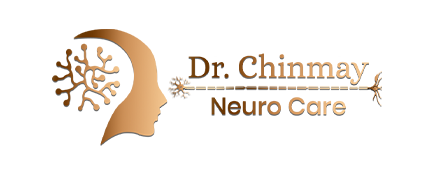
What is Back Pain?
Back pain is a common condition that causes discomfort anywhere along the back, from the neck to the lower spine. It can result from various injuries, strains, or medical conditions. As one of the leading causes of disability worldwide, back pain often leads people to seek medical help or miss work.
Fortunately, most episodes of back pain can be prevented or relieved, especially for individuals under the age of 60. Simple home treatments, using the body properly, and maintaining a healthy lifestyle can often heal back pain within a few weeks. Surgery is rarely needed.
Common Causes of Back Pain
Back pain can develop for many reasons, often without an obvious cause visible in tests or imaging. Some of the most common causes of back pain include:
- Muscle or Ligament Strain: Repeated heavy lifting, sudden movements, or poor posture can strain the muscles and ligaments in the back, causing pain or spasms, especially in individuals who are not physically fit.
- Bulging or Ruptured Disks: Disks in the spine act as cushions. If they bulge or rupture, they may press on nearby nerves, resulting in pain. However, a bulging or ruptured disk might not always cause back pain.
- Arthritis: Osteoarthritis can affect the lower back, leading to inflammation and pain. In some cases, it can cause spinal stenosis, which is a narrowing of the space around the spinal cord.
- Osteoporosis: Brittle bones caused by osteoporosis can result in painful fractures in the spine.
- Ankylosing Spondylitis: This inflammatory disease can cause the spine’s bones to fuse, reducing flexibility and leading to pain.
Symptoms of Back Pain
Back pain can range from a mild muscle ache to sharp, burning, or stabbing pain. The pain may also travel down your leg, especially if nerves are affected. Common symptoms include:
- Muscle Aches: A constant, dull pain.
- Sharp or Stabbing Pain: Sudden, intense pain.
- Radiating Pain: Pain that moves down the leg.
- Limited Movement: Difficulty bending, twisting, or standing.
- Pain with Activity: Walking or standing may make the pain worse.
If your back pain lasts for a long time or is accompanied by numbness, weakness, or loss of bladder control, seek medical help. For expert care and treatment, consult Dr. Chinmay Kumbhar, an expert neurologist in Baner, Pune.
Back Pain Treatment Options
Most cases of back pain improve within a month with home treatments, especially for people under age 60. However, some individuals experience pain lasting for several months. Simple measures like pain relievers and heat therapy may be sufficient, but bed rest is not recommended. It’s important to continue light activities, such as walking, as much as possible. If the pain doesn’t improve after a few weeks, consult a healthcare professional for stronger medications or other therapies.
Medicines for Back Pain
Treatment with medications depends on the type of back pain:
- Pain Relievers: Nonsteroidal anti-inflammatory drugs (NSAIDs) like ibuprofen (Advil) or naproxen (Aleve) can help reduce pain. Overuse can lead to serious side effects, so always follow your doctor’s instructions.
- Muscle Relaxants: If pain persists, muscle relaxants may be prescribed to relieve muscle spasms, though they may cause dizziness or drowsiness.
- Topical Pain Relievers: Creams, ointments, and patches can deliver pain-relieving substances directly through the skin.
- Narcotics: Opioid medications, like oxycodone, may be used for short-term pain management under close medical supervision.
- Antidepressants: Some antidepressants, such as duloxetine (Cymbalta), have been found effective in treating chronic back pain.
Physical Therapy
A physical therapist can guide you through exercises to increase flexibility, strengthen back muscles, and improve posture. Regular therapy can help prevent future pain and teach you how to modify movements to avoid pain flare-ups during an episode.
Surgical and Other Procedures
If conservative treatments don’t work, your healthcare provider may recommend more advanced procedures, including:
- Hydrcortisone Injections: These can provide temporary pain relief, especially for pain radiating down the legs, by reducing inflammation around nerve roots.
- Surgery: For conditions like herniated disks or spinal stenosis, surgery may be necessary to create more space within the spine and relieve nerve pressure.
- Nerve Blocks: Special injections to numb the pain causing nerves will help reduce the pain
Consult us to get expert opinion from Dr. Chinmay Kumbhar for your low back pain issues and be rest assured to get relieved from your long standing back pain.
Prevention of Back Pain
Preventing back pain is possible with simple lifestyle changes and habits. Here are some tips to help reduce the risk of back pain:
- Maintain Good Posture: Stand and sit upright with your shoulders back and your spine straight.
- Exercise Regularly: Strengthen your back, core, and leg muscles through regular exercise like walking, swimming, or yoga.
- Lift Properly: Bend your knees, not your back, when lifting heavy objects.
- Maintain a Healthy Weight: Extra weight puts strain on your back, so maintaining a healthy weight can reduce the risk of pain.
- Use Supportive Shoes: Wear shoes that provide proper support, especially if you stand or walk for long periods.
- Avoid Prolonged Sitting: Take breaks and change positions regularly if you sit for long periods.
Incorporating these habits into your daily routine can help prevent back pain and keep your spine healthy. If you’re experiencing ongoing back pain, consult Dr. Chinmay Kumbhar, an expert neurologist in Baner, Pune, for personalized advice and treatment.
Why Choose Dr. Chinmay Kumbhar for Back Pain Treatment ?
- Expert Diagnosis: Dr. Chinmay Kumbhar provides a thorough diagnosis to find the cause of your back pain, whether it’s muscle strain, spinal issues, or other conditions.
- Personalized Treatment Plans: Each patient receives a customized treatment plan that is tailored to their specific needs to help manage and relieve back pain.
- Pain Relief Medications: Dr. Kumbhar offers pain relief through medications like pain relievers, muscle relaxants, and anti-inflammatory drugs, depending on the severity of your pain.
- Physical Therapy: Targeted exercises to strengthen the back, improve flexibility, and prevent future pain episodes are recommended, with adjustments based on your age and condition.
- Advanced Treatments: For persistent pain, treatments such as cortisone injections, nerve blocks, or radiofrequency ablation are available to provide lasting relief.
- Age-Specific Care:
- For younger patients (under 60 years): Focus is on non-invasive treatments like physical therapy and pain management.
- For older patients (over 60 years): Special care for age-related conditions like arthritis and osteoporosis, with appropriate therapies and potential surgery if needed.
- Surgical Consultation: If necessary, Dr. Kumbhar guides whether surgery is the best option for long-term relief.
- Ongoing Care and Support: Continuous monitoring ensures the treatment plan is adjusted as needed to prevent back pain from returning and promote recovery.
